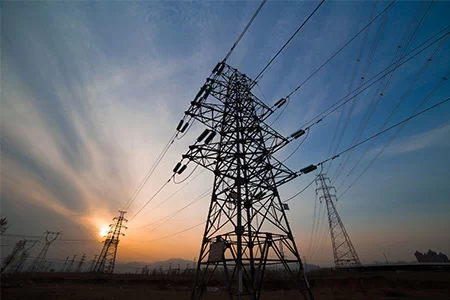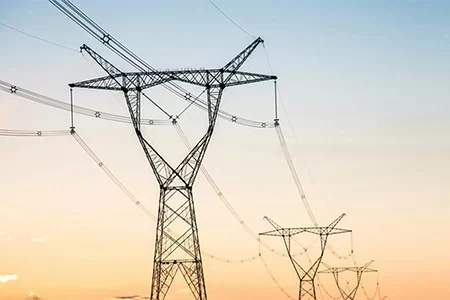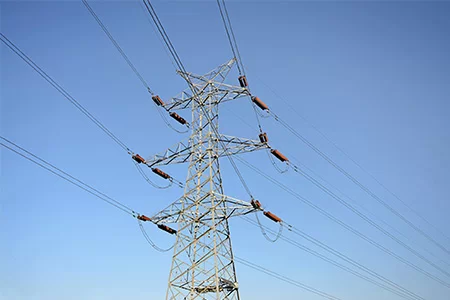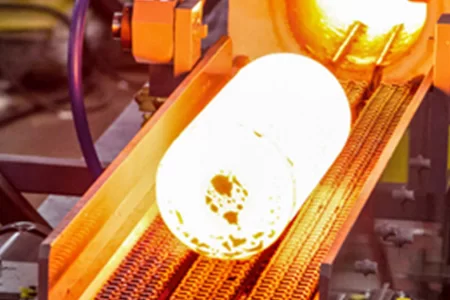HULK Metal will continuously update the dynamics of the metal products industry, to support your decision-making.

Hulk Metal News
Share what's new
-
Home>
-
Blog>
-
Technology>
Technical Standards Analysis of Wire Cable Grip: Why It is So Important

Wire Cable Grip plays an indispensable role in the construction and maintenance of power engineering, telecommunication networks, and railway electrification transmission line projects. It is not only a tool for connecting or fixing wires, but also an important equipment to ensure the safe and stable operation of the power system. Its technical standards are directly related to the reliability of power transmission and the safety of the overall project. Therefore, it is particularly important to have a deep understanding of the technical standards of Wire Cable Grip.
This article will comprehensively analyze the technical requirements of this product from the aspects of the definition, technical standard requirements, load-bearing capacity, material selection, durability, and compliance of Wire Cable Grip, and further explore why these standards are so important.
Definition
Wire Cable Grip, also called Wire grip or jaw Wire grip, is a special tool used for construction and maintenance in power, communication, and other related fields. Its main function is to provide reliable gripping force in the process of tightening and fixing cables and wires to prevent cables or wires from sliding during construction or maintenance. Wire grip is widely used in transmission line installation, railway electrification construction, and laying and maintenance of telecommunication networks.
There are many types of wire grippers according to different application environments, such as different specifications of wire grippers for wires of different diameters, and special types designed to adapt to special working occasions. Their structural design and material selection are crucial to ensure their effectiveness under high-intensity working conditions.
Technical standards
Material selection
One of the core technical standards of wire grippers is their material selection. Since wire grippers need to withstand high-intensity loads and various complex environmental conditions during use, their materials must have the following characteristics:
High strength and durability
Wire cable grips are usually made of high-toughness carbon steel or high-quality alloy steel. These materials are hot-die forged, quenched and tempered, and heat-treated to give them excellent strength and durability, and can maintain stable performance during long-term use without failure due to fatigue.
Corrosion resistance
In outdoor applications, wire grippers will be exposed to different climatic conditions for a long time, especially in humid and salt spray environments and the corrosion resistance of wire cable grips is particularly important. Therefore, wire cable grips usually adopt a color zinc plating process, which not only enhances its surface corrosion resistance but also improves its overall aesthetics.
High temperature and wear resistance
Because cables and wires generate heat during the transmission of electricity, especially in high-power transmission situations, the wire gripper needs to have a certain high-temperature resistance. In addition, the wire gripper must have excellent wear resistance to cope with long-term friction and mechanical stress.
Size and shape design
The size and shape design of the wire cable grip must meet various requirements under its working conditions. This includes whether it can firmly clamp cables and wires of various specifications and diameters and whether it has the flexible operation.
Adapt to a variety of cable diameters
The wire cable grip should be designed to adapt to a variety of cable or wire diameter ranges, thereby reducing the frequency of tool replacement and improving work efficiency. It should ensure that the target object can be gripped smoothly and without slipping during the process of tightening the cable or wire.
Ergonomic design
In the shape design of the wire cable grip, in addition to considering its cable clamping performance, the operator's comfort and safety should also be considered. The handle and tensioning device of the wire gripper usually adopt an ergonomic design to reduce operator fatigue and improve work efficiency.
Load bearing capacity
The load-bearing capacity of the wire grip is one of the important indicators to measure its performance. In power engineering and other related construction, the wire grip needs to withstand huge tension. Its load-bearing capacity directly affects the safety of the project.
Static and dynamic load
The load capacity of the wire cable grip not only needs to meet the requirements of static load but also needs to cope with the dynamic load generated by the change of cable or wire tension during the construction process. To this end, the wire cable grip must undergo rigorous load testing to ensure that it can remain stable under different working conditions.
Safety factor
In order to further improve the reliability of the wire cable grip, a safety factor is usually introduced during the design and production process, so that the wire cable grip can still maintain normal working conditions even when the design load is exceeded. This design not only increases the durability of the wire cable grip but also effectively prevents accidents.
Durability and reliability
During long-term use, the durability and reliability of the wire grip are key factors to ensure its normal function. Durability is mainly reflected in the fact that the wire grip does not show obvious wear or deformation after long-term use; while reliability requires that the wire grip can still maintain efficient working conditions under harsh conditions.
Wear control
During the operation of the wire cable grip, friction between the cable and the wire cable grip is inevitable. To ensure durability in long-term use, the design of the wire cable grip must take into account how to minimize wear. For example, the use of wear-resistant alloy materials and optimized clamping design can effectively extend the service life of the wire cable grip.
Deformation control
Under high load conditions, the wire grip may undergo plastic deformation, affecting its normal use. Through processes such as hot die forging and tempering treatment, the wire cable grip's anti-deformation ability can be greatly enhanced to ensure its reliability under high load conditions.
Compliance and national standards
The production and use of wire grips must comply with relevant national standards, which is not only a requirement for product quality but also a guarantee for safe use. In China, the relevant technical standards for wire grips include the national standard GB/T 2589 and relevant industry standards. These standards provide detailed regulations on the material, structural design, load capacity, corrosion resistance, and wear resistance of wire grips.
Importance of national standards
The formulation of national standards aims to ensure product safety and performance consistency. For the cable clamp, compliance with national standards means that the product can achieve the expected performance indicators in actual applications and can ensure the stable operation of the power system.
Certification and testing
To ensure that the cable clamp meets national standards, manufacturers usually need to pass a series of quality certification and testing processes. These tests include static load testing, dynamic load testing, corrosion resistance testing and wear testing to ensure the reliability of the cable clamp under different conditions.
Why technical standards are so important
Technical standards are not only the specifications of product performance but also the guarantee of the safety of the entire construction process and power system. Qualified cable clamps can avoid construction accidents caused by tool failure, reduce maintenance and replacement costs, and improve the efficiency and safety of the overall project. It not only protects cables and wires and ensures the stable transmission of electricity, but also indirectly reduces labor costs by improving the work efficiency of operators.
Improve construction efficiency
Cable clamps that meet technical standards can significantly improve construction efficiency. Due to their reasonable size and shape design and convenient operation, engineers can complete the installation and maintenance of cables or wires in a short time.
Ensure safety
Power construction and maintenance involve high voltage and high tension, and the failure of any tool may lead to serious safety accidents. Through strict technical standards and quality control, the wire gripper can ensure the safety of operators and equipment during the construction process.
As an important tool in the construction of power projects, telecommunications networks and railway lines, the technical standards of Wire Cable Grip are crucial. Correct material selection, reasonable size design, strong load bearing capacity, excellent durability and reliability, and compliance with national standards are all key factors for the long-term and stable operation of the wire gripper.
By following strict technical standards, the wire gripper can not only perform well under various complex working conditions but also ensure the safe and stable operation of the power system. In future development, with the advancement of science and technology and the application of new materials, the performance and reliability of Wire Cable Grip will be further improved, providing more powerful guarantees for the construction and maintenance of power projects.
Article Navigation
Article Navigation
Industries
Foundries
-

September.14, 2024
Types of Jaw Wire Grip and Suitable Use Scenarios
READ MORE
-

September.13, 2024
Cable grip VS Wire Grip Comprehensive Detailed Analysis
READ MORE
-

September.12, 2024
Do you know the comprehensive analysis of wire grip puller?
READ MORE
-

July.03, 2024
What are the processes of hot forging?
READ MORE






